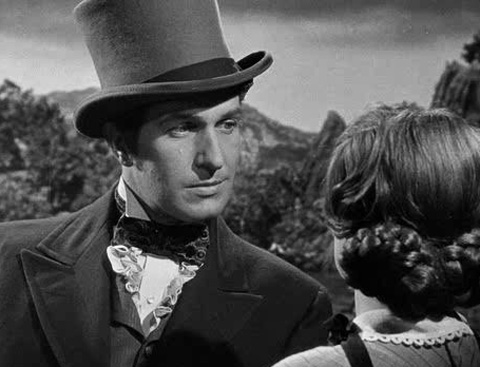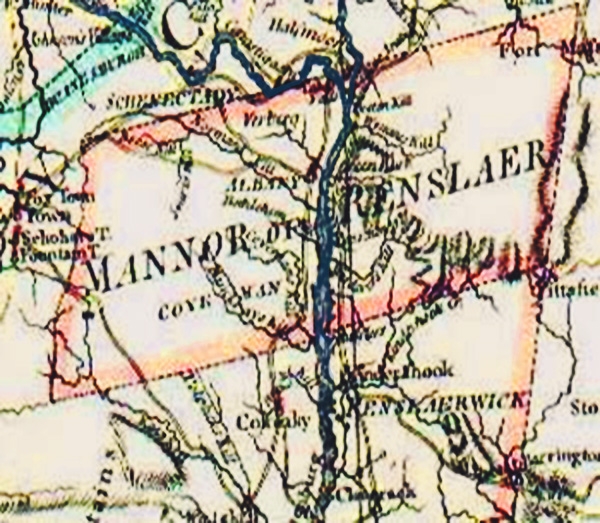

Home About Travel History Genealogy Resources
Americana Journeys - Genealogy History
Rensselaerwyck Manor - Dutch Settlement in the Hudson River Valley
 In some genealogical searches for early colonial ancestors, a birthplace of Rensselaer may come up. In dates after 1991, this would refer to Rensselaer County following the formal establishment of the state of New York. If before 1990, this would refer to a tract of land surrounding Albany called Rensselaerswyck. So what is that? In the romantic novel, Dragonwyck, with themes akin to the novels of English society like Emily Bronte’s Wuthering Heights, and the 1940s movie made from the story, a girl of modest means comes under the spell of the Patroon of Dragonwyck, played by a pre-horror Vincent Price. The idea of a stratified society in colonial America in upstate New York was very much a product of the Dutch settlement of the Hudson Valley in the early 19th Century.
In some genealogical searches for early colonial ancestors, a birthplace of Rensselaer may come up. In dates after 1991, this would refer to Rensselaer County following the formal establishment of the state of New York. If before 1990, this would refer to a tract of land surrounding Albany called Rensselaerswyck. So what is that? In the romantic novel, Dragonwyck, with themes akin to the novels of English society like Emily Bronte’s Wuthering Heights, and the 1940s movie made from the story, a girl of modest means comes under the spell of the Patroon of Dragonwyck, played by a pre-horror Vincent Price. The idea of a stratified society in colonial America in upstate New York was very much a product of the Dutch settlement of the Hudson Valley in the early 19th Century.
The Dutch West India Trading Company got as far up the Hudson River as present day Albany and established a trading outpost. They built a fort on the river bank and called it Fort Orange. In 1629, the West India Company gave permission to a number of investors in New Netherlands to found patronships, enabled by the Charter of Freedoms and Exemptions. Killian Van Rensselaer, a wealthy jewel trader and merchant from Amsterdam, one of the founders and directors of the West India Comany, the “patrician” or “patroon”, was granted a large track of land surrounding Fort Orange in 1629. He was very likely the originator of the idea of "patroonship" in the Americas and was the most successful beneficiary.
 The original Van Rensselaer's Manor or Rensselaerswyck had only loosely defined borders, but stretched along the shores of the Hudson River to the Mohawk River. The town of Beverwyck, immediately outside Fort Orange, formed of a 1 mile wide by 16 mile long tract was carved out of the greater Van Rensselaer manor by charter. Beverwyck (getting its Dutch name from the ample beaver pelts) became Albany when the English established colonial control, but the Van Rensselaer family descendants owned the surrounding land for the next 200 years. The family went on to provide many prominent figures in New York history.
The original Van Rensselaer's Manor or Rensselaerswyck had only loosely defined borders, but stretched along the shores of the Hudson River to the Mohawk River. The town of Beverwyck, immediately outside Fort Orange, formed of a 1 mile wide by 16 mile long tract was carved out of the greater Van Rensselaer manor by charter. Beverwyck (getting its Dutch name from the ample beaver pelts) became Albany when the English established colonial control, but the Van Rensselaer family descendants owned the surrounding land for the next 200 years. The family went on to provide many prominent figures in New York history.
Killian Van Renssalaer needed a population to make his land prosper, so he recruited settlers in Europe, craftsmen and farmers mostly from his native Holland, but also others, German and Scandanavian to come to the New World and work his land as tenants, paying for their passage and taking rents and a portion of their products in return, very much in the European tradition of lords of the manor. This “Plantation” or “patroonship” along the Upper Hudson Valley became one the most successful of the early colonial settlements, following just behind the pilgrim colonies in Massachusetts and Rhode Island (see Sweets of Rhode Island).
At first, most of Van Rensselaer's pioneer tenants settled within a just a few miles of the protection of Fort Orange, practicing farming and raising animals as was laid out in the contracts they had signed, but many spent a good deal more effort in trading furs, which became an attractive avenue for gaining riches outside of the contract. On the death of the first patroon, Killian Van Rensselaer, in 1643, the rights to the estate in America passed through two generations of Van Rensselaers to another Killiean, the younger.
In 1664, the Dutch United Republic of the Netherlands surrendered their territory of New Netherlands to the English. In 1685, the English Royal Governor of New York, Thomas Dongan, issued a patent for the "Manor of Rensselaerswyck" which established the estate as a legal entity, and formally established its borders. The patent excluded the fort and town of Albany and the city was granted its own charter in 1686.
Then, in 1904, a section of the estate, the “lower manor”, called Claverack, was separated and granted to a brother, Hendrick Van Rensselaer, who had been instrumental in founding the city of Albany. Although it was a part of the colonial County of Albany from 1691 until 1975, Rensselaerwyck sent its own representative to the New York Provincial Assembly. Following the Revolutionary War for Independence, the representative seat for Rensselaerwyck was dissolved and absorbed by Albany County. In March of 1979, the new State legislature officially divided the old manor land into East and West districts. In 1988, Watervliet was made a separate district and in 1993, Bethlehem was named a town within Albany County. The part of the land holding on the east side of the Hudson River, then called Greenbush, became part of newly created Rensselaer County in 1991.
The manor estate technically ended with the death of Stephen Van Rensselaer III in 1839, though the family continued on, living in the Manor House, which still exists.
Adrawn by Albany surveyor John R. Bleecker from 1967 identifies many of the landholders of the manor at that time. The earliest surviving census of the Van Rensselaer Manor was made in 1697. A list of freeholders provides eighty-one names of men in the "colony" of Rensselaerwsyck in 1920 and again in 1942 . The Watervliet portion of the census of 1990 appears elsewhere on this website.
Information provided by the Colonial Albany Project of the New York State History Museum and researcher Stefan Bielinksi.